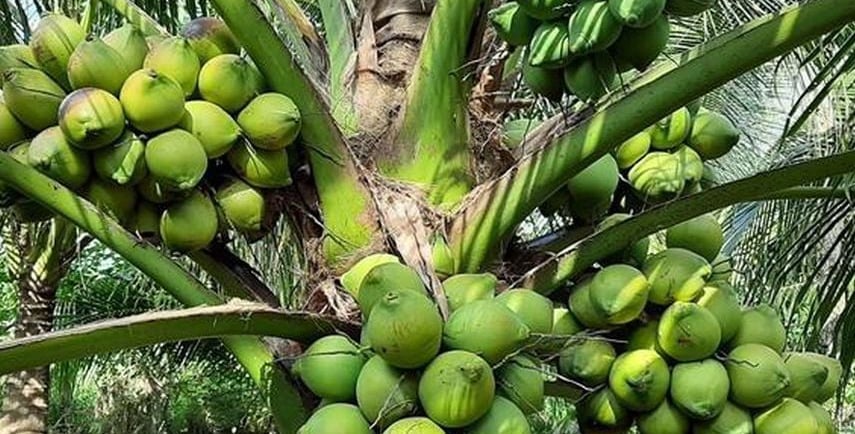Importing Fresh Coconuts from Vietnam: Everything an Importer Should Know
How to source fresh coconut
2/2/20223 min read


Vietnam, with its tropical climate and extensive coastline, is a significant player in the global coconut market. For importers looking to bring fresh coconuts from Vietnam to their local markets, understanding the intricacies of the process is crucial. This guide covers everything you need to know to successfully import fresh coconuts from Vietnam.
1. Understanding the Vietnamese Coconut Industry
Vietnam's coconut production is concentrated in the Mekong Delta region, particularly in Ben Tre province, known as the "coconut capital" of Vietnam. The country primarily grows aromatic coconut varieties, known for their sweet water and tender meat.
Key facts:
- Vietnam produces about 1.5 billion coconuts annually
- Peak harvest seasons are April-June and October-December
- Most popular variety: Xiêm Xanh (Green Dwarf)
- 3 Most common coconut type to import:
Diamond Coconut
Easy Open Coconut
Ready Young Coconut
2. Quality Standards and Selection
When importing fresh coconuts, quality is paramount. Look for:
- Size uniformity (typically 8-12 inches in circumference)
- Weight (usually 1-1.5 kg each)
- No visible damage or cracks
- Absence of mold or discoloration
- Freshness (ideally harvested within 1-2 weeks)
Vietnamese suppliers often grade coconuts based on size and quality. Discuss grading standards with your supplier to ensure you're getting the quality you expect.
3. Regulatory Requirements
Importing fresh coconuts involves navigating regulations in both Vietnam and your home country:
Vietnam export regulations:
- Phytosanitary certificate from Vietnam's Plant Protection Department
- Certificate of Origin
- Packing list and commercial invoice
Import regulations (vary by country, but generally include):
- Import permit
- Compliance with phytosanitary regulations
- Adherence to food safety standards
- Proper labeling and packaging
Check with your local agricultural or food safety authority for specific requirements.
4. Choosing a Reliable Supplier
Finding a trustworthy supplier is crucial. Consider:
- Visiting trade fairs like Vietnam Foodexpo
- Consulting the Vietnam Coconut Association
- Using B2B platforms like Alibaba or Vietnam's Vietrade
When evaluating suppliers, look for:
- Export experience
- Quality certifications (e.g., HACCP, ISO 22000)
- Ability to meet your volume requirements
- Positive references from other importers
5. Pricing and Negotiations
Coconut prices can fluctuate based on season, demand, and quality. As of 2024, expect to pay around $1.00 - $1.5 per coconut FOB . Factors affecting price include:
- Size and quality grade
- Volume of order
- Season and availability
- Packaging requirements
Be prepared to negotiate, but remember that extremely low prices might indicate lower quality or unethical practices.
6. Logistics and Transportation
Proper handling is crucial for maintaining coconut freshness:
- Coconuts are typically shipped in refrigerated containers (reefers) at 12-14°C (53-57°F)
- Transit time from Vietnam to major ports is usually 2-4 weeks
- Coconuts are often packed in mesh bags or cardboard boxes, 40-50 per package
Key considerations:
- Choose a reliable freight forwarder experienced in handling fresh produce
- Ensure proper ventilation in containers to prevent mold growth
- Consider insurance to protect against potential losses
7. Post-Arrival Handling
Once the coconuts arrive:
- Conduct a quality inspection immediately
- Store at 12-14°C (53-57°F) with 85-90% relative humidity
- Sell within 1-2 months for optimal freshness
- Monitor for any signs of spoilage or quality issues
8. Market Considerations
Understanding your target market is crucial:
- Fresh coconuts are popular in health food stores, Asian markets, and increasingly in mainstream supermarkets
- Consider offering value-added services like coconut opening or packaging for retail sale
- Be aware of local preferences (e.g., some markets prefer young coconuts for drinking, others mature coconuts for meat)
9. Challenges and Solutions
Common challenges in importing fresh coconuts include:
1. Quality inconsistency
Solution: Establish clear quality standards with your supplier and conduct regular inspections
2. Shipping delays
Solution: Build buffer time into your supply chain and consider multiple suppliers
3. Spoilage during transit
Solution: Ensure proper temperature control and consider shorter shipping routes if possible
4. Seasonal availability
Solution: Plan orders in advance and consider stocking up during peak seasons
10. Building Long-term Relationships
Success in importing fresh coconuts often depends on building strong, long-term relationships with suppliers. Regular communication, fair negotiations, and mutual understanding of challenges can lead to a more stable and profitable import business.
Conclusion
Importing fresh coconuts from Vietnam can be a rewarding venture, tapping into the growing demand for this versatile and healthy fruit. By understanding the industry, carefully selecting suppliers, navigating regulations, and managing logistics effectively, you can build a successful import business. Stay informed about market trends, maintain high-quality standards, and be prepared to adapt to challenges as they arise. With the right approach, you can bring the tropical taste of Vietnamese coconuts to your local market successfully.
Address
505 Minh Khai, Hai Ba Trung Dist, Hanoi, Vietnam
102 Phan Đăng Lưu, Phú Nhuận Dist, Hochiminh, Vietnam
